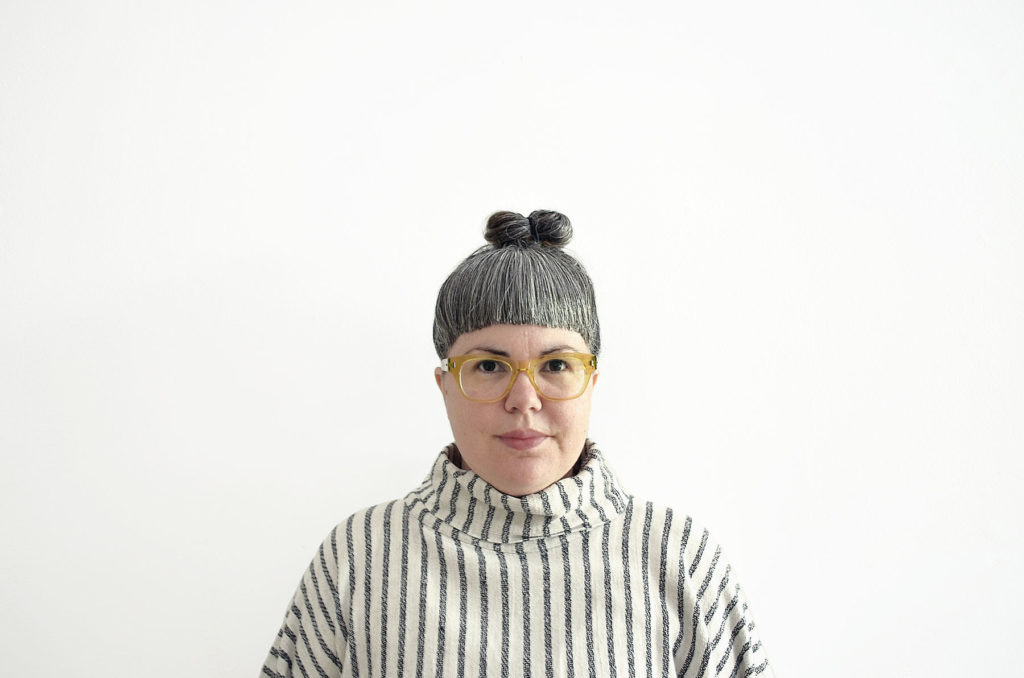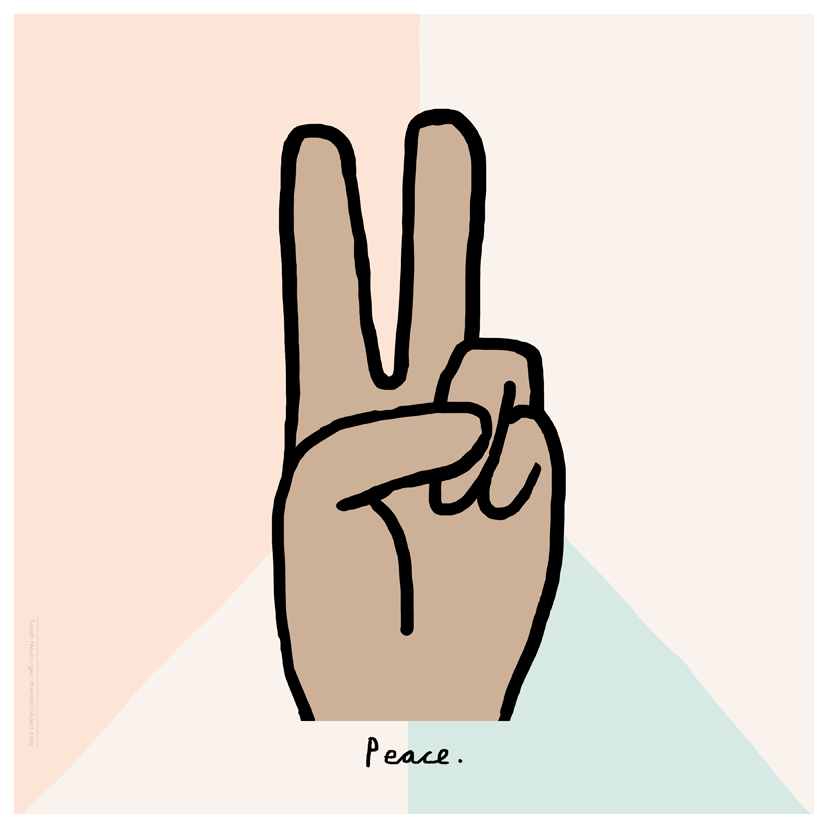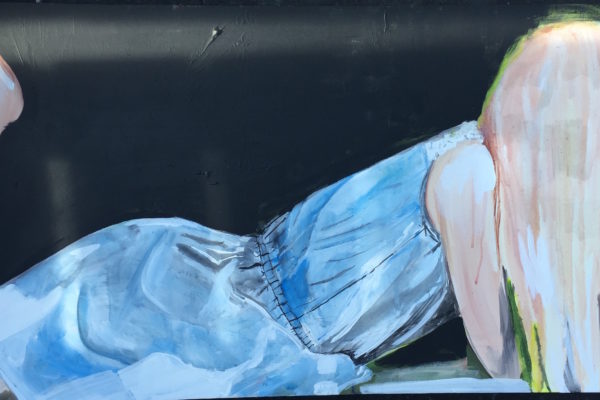Sarah Neuburger isn’t exactly what you would call “extra,” but she’s sure as hell not “understated” either. 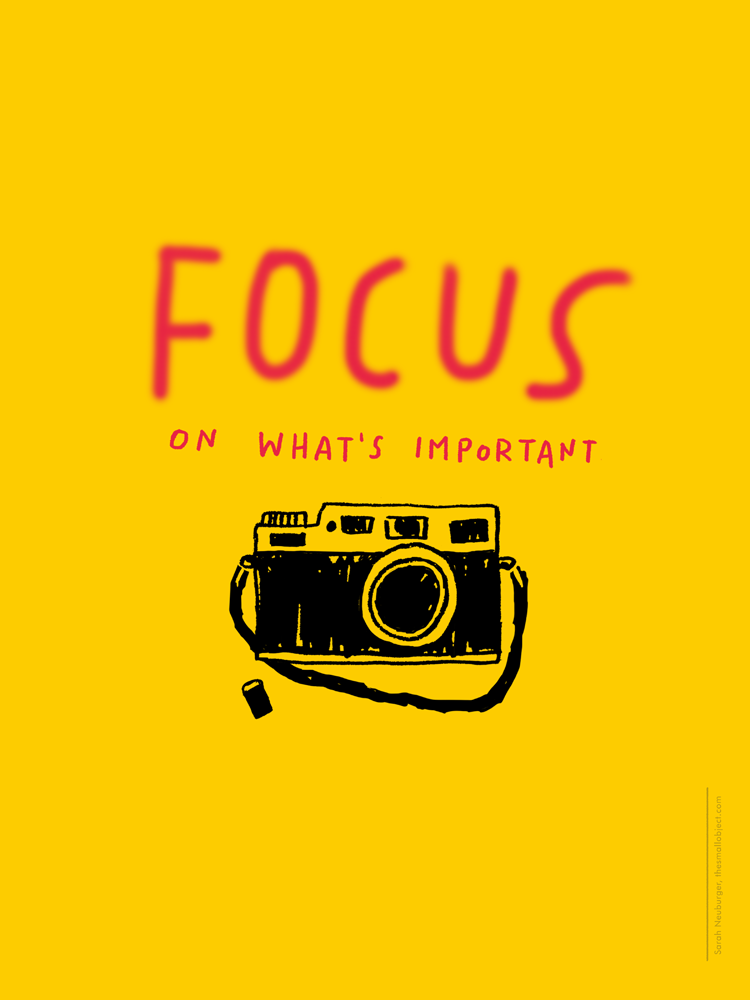 Working from a clean, crisp white studio and wearing a sweet, simple smock dress that she has sewn herself, everything about Sarah’s world is decidedly minimalist.
Working from a clean, crisp white studio and wearing a sweet, simple smock dress that she has sewn herself, everything about Sarah’s world is decidedly minimalist.
Articulating the way she sees the world by taking away as much unnecessary information as possible, Sarah manages to tell entire stories with only a few purposeful lines. Focusing on the details of a subject and breaking them down to their purest form leaves the viewer with a clear message (and sometimes even an “ah-ha!” moment) when they figure out what she’s saying.
A self-professed eternal optimist, Sarah started “The Small Object,” a creative blog and means to sell her handmade art objects, rubber stamps, and wedding toppers, over a decade ago to connect with creatives over the internet. Since then, she’s gained a sizable following, with more than 10,000 fans on Instagram alone. She has worked with clients all over the world, authored and illustrated a stationery collection with Chronicle Books, become a founding member of Paper Ghost Press, and embossed her signature style on countless products and pieces of paper.
You may have stumbled upon Sarah’s work without even knowing it, through gazing upon her Atlanta mural at Citizen Supply in Ponce City Market, seeing a child wearing one of her illustrated hats from Treehouse Kid and Craft in Decatur, noticing her style on the MailChimp site or attending a wedding where her hands lovingly made the cake topper. We talked to Sarah over Java Jive biscuits about the beginning of blogging, why freelance life is a huge privilege, and how she became one of Atlanta’s favorite illustrators.
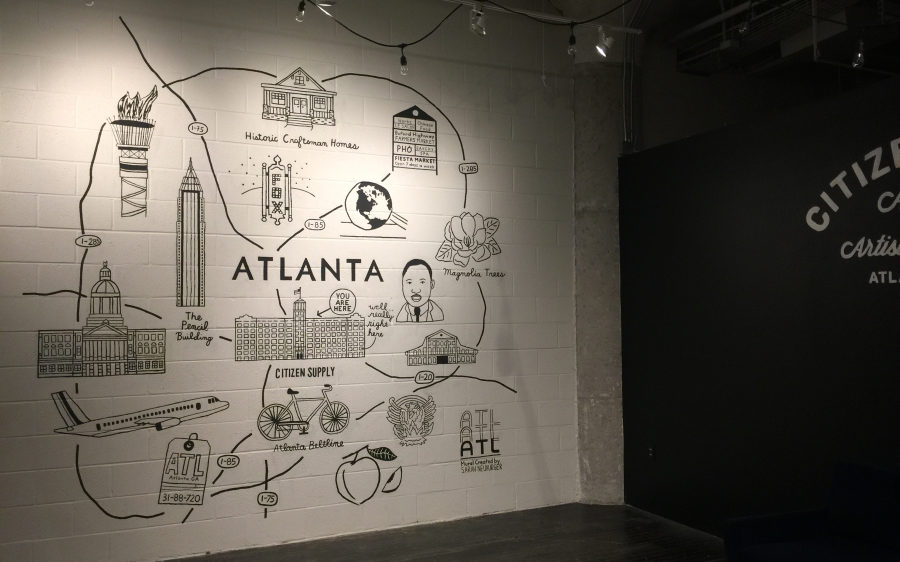
CommonCreativ: How did you find out that you were an artist?
Sarah Neuburger: My parents were always art hobbyists. We had my mom’s oil paintings hanging on the walls of our childhood homes, and my dad is obsessed with architecture, so I was taught to pay attention to details pretty early on. That’s also why I say “homes,” as we moved a lot. My mom was a teacher and had a very cut-and-dry attitude to art: you couldn’t say that you “can’t” do something. You’d have to try it, and that’s what helped me [see] that I was far more creative than I realized.
A shift happened in my junior year of high school when I had an art teacher that I adored. Her encouragement and positive reinforcement were imperative to my career choice. She was incredibly nurturing of my talents and connected me to art opportunities. She made sure that I was taking college-level courses in high school. I can say with absolute certainty that without that teacher I would not have found success with art. I’d be an accountant. Seriously.
CC: How did you get your start?
SN: At the beginning of my career, the internet was relatively new, and websites for artists weren’t really “a thing” yet. I was in New York, attending The School of Visual Arts in NYC for my graduate degree in Studio Arts, and trying to figure out the gallery scene in New York without much luck. What I discovered was that a lot of artists on the West Coast were selling their art through websites, so after college, I took their lead when I moved back to South Carolina and started the blog, “The Small Object.”
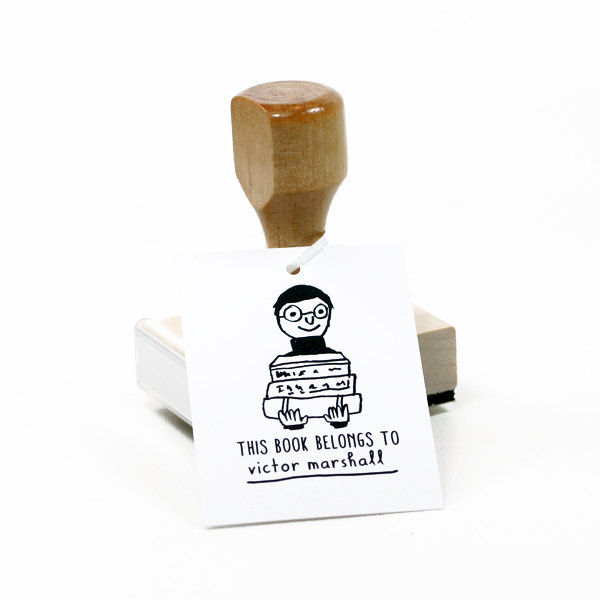 CC: How did blogging and social media play into your career success?
CC: How did blogging and social media play into your career success?
SN: Starting “The Small Object” allowed me to maintain connections and make friends.
I was a tiny handmade business, offering clothespin sculptures, and they were really successful. So by the time I’d sold about 1,000 of them I decided to move onto a new idea, which was the wedding toppers. I also started hand making stamps, which I cut by hand until Anthropologie gave me a huge order and I had to have them laser cut or actually lose my hands. When the same thing happened again, and I’d had enough of making those I decided to try my hand at freelance illustration. The internet acted as my portfolio.
I wasn’t concerned with the “rules” — numbers of followers and algorithms didn’t give me heart palpitations. I just made my art and was really fortunate that people kept buying it. I have never enjoyed being in the spotlight, out front and center, so this was a way that I could show my art under this lovely, safe blanket of “The Small Object,” and it could be less about Sarah as the person.
CC: How do you describe your artistic style?
SN: My style is minimalism. I try and convey what I need to without any of the clutter.
It’s kind of a game. How much information do you need to be able to read what I’m putting out, while still saying friendly and relaxed? I don’t want unnecessary texture; my brain is wired to reject clutter, I guess. It spills over into different aspects of my life. I make my own clothing because I don’t want embellishments. Less is more to me.
SN: I honestly want to make art every minute of my life, and I’m annoyed that I have to go to sleep. I just want to keep creating. I’m inspired unconsciously, but the usual things get me excited: being outdoors, planting something, camping, hiking and getting away from my phone and computer. Screens don’t help too much when you’re looking for inspiration. I also get my inspiration from my projects. I love to work with Atlanta businesses. It’s challenging and exciting and satisfies my need to create something new and different.
CC: What advice do you have for aspiring freelancers?
SN: Just do it. Before I met my wife, I worried all of the time that my career wasn’t sustainable. In my early 20s I wasn’t concerned with things like health insurance or buying a house, but as the years pass and your bones get a little creaky, these things become very important. I was lucky because I had someone to share the financial burden with and didn’t have to go it alone. I feel incredibly fortunate, and I may not have made the same decisions that I did had I been single. I think you have to assess your comfort level. What are you willing to give up for your art? Freelance life is not for everyone.
CC: How can we find your work?
SN: A bunch of different ways! I am part owner of “Paper Ghost Press,” which is a print company run by three friends (myself, Katrin Wiehle and Mike Lowery). We used to have a physical space in Candler Park, but now we sell high-quality art prints and illustrations online.
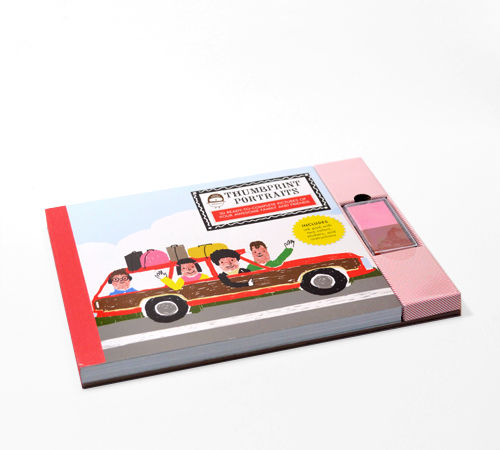 We have a bunch of super excellent retail stores that sell our art prints, and we also pop up here and there, mainly at festivals. We have live drawing events with our fortune-telling machine where we’ll draw your fortune. It’s so fun! I’ve just loved having Katrin and Mike to bounce ideas off, have a touchstone for legal advice and pricing help. It feels comforting to have a support system that understands this crazy life.
We have a bunch of super excellent retail stores that sell our art prints, and we also pop up here and there, mainly at festivals. We have live drawing events with our fortune-telling machine where we’ll draw your fortune. It’s so fun! I’ve just loved having Katrin and Mike to bounce ideas off, have a touchstone for legal advice and pricing help. It feels comforting to have a support system that understands this crazy life.
CC: How do you feel about Atlanta’s art scene?
SN: I am entirely not qualified to answer that question. I don’t always know where the interesting things are, and I don’t know if it’s a product of me being unaware or the layout of the city. Atlanta feels fizzy — there’s always something going on, and something happening. It’s pretty awesome in that respect.
CC: What are some of your favorite career highlights?
SN: I really enjoy the process. Some of my favorite things I’ve done, I didn’t necessarily know what I was doing, I just signed the contract and figured it out. That might not be good advice though. I adored writing and creating illustrations for Design*Sponge. I was very proud of the work I did for MailChimp. I get an enormous amount of joy creating the house drawings, as it makes me feel close to my dad as his love of architecture is so substantial. Paper Ghost, every cake topper, every custom illustration, working with Treehouse Kid and Craft and Seed Factory and Bla Bla Kids. The list goes on and on, and I truly love it all. I feel like I manifested my freelance career and I don’t ever want to take it for granted.
See more of Sarah’s work on her portfolio site and Instagram.

